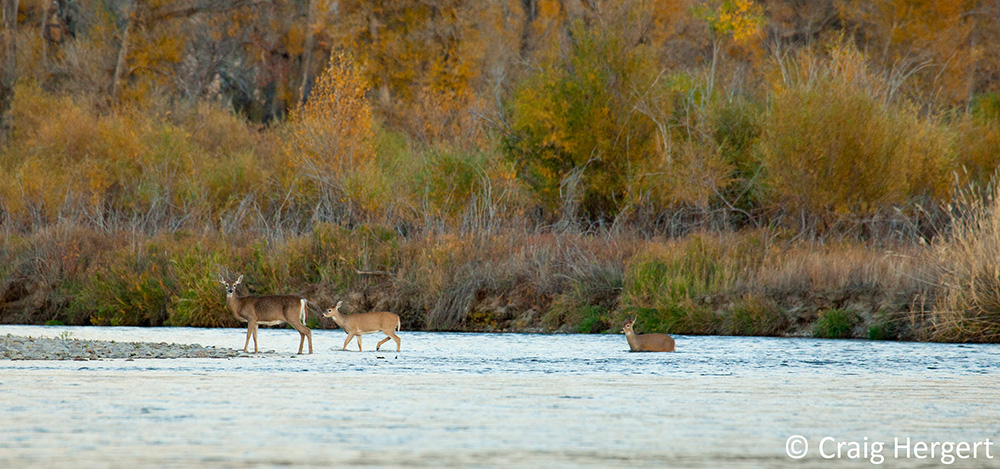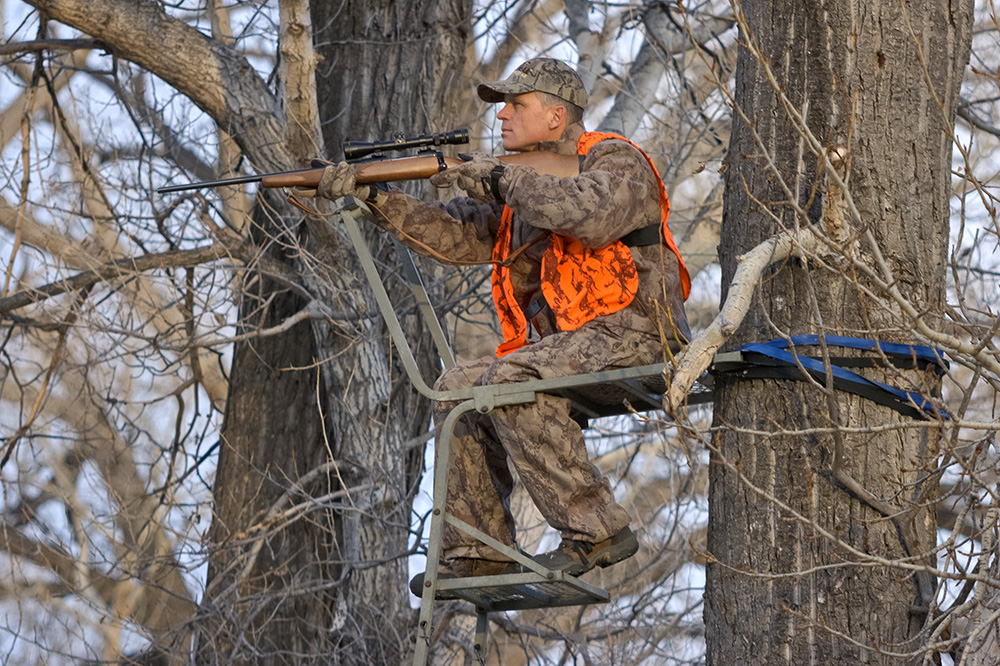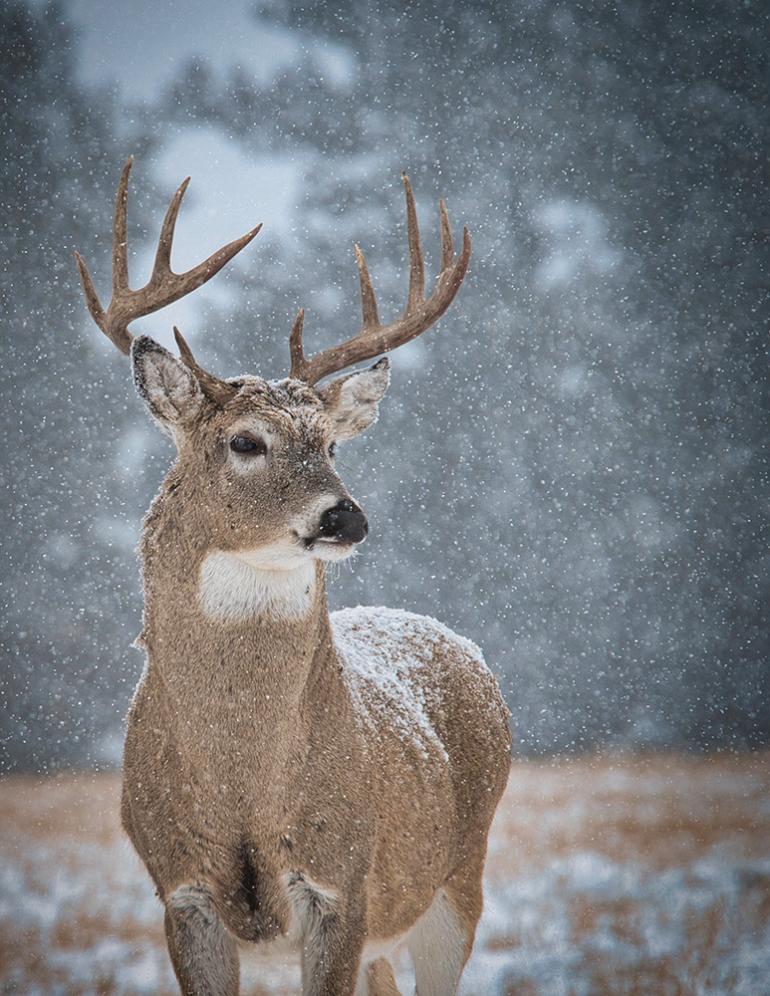Deerly Departed
The ever elusive whitetail.
In October, during work, I salve a wandering mind by looking at photos of previous years. A few whitetail bucks—meat bucks—came down in the first and second weeks of the season. But the dates on the photos remind me that it doesn’t really start happening until mid-season. The heart of it, the time when whitetail bucks really lose their minds, is mid-November. That’s when my motions turn serious. I wake earlier, get in the stand earlier, take a grunt tube, bundle up well. The hunt is on.
Habitat
White-tailed deer (Odocoileus virginianus) are a creature of private ground. In southwest Montana, that means river and stream bottoms. Almost all of this terrain is private. There are some sections or half-sections of public ground, usually state land, but they can be hard to get to and inaccessible. I have found a few of those sections that I could float to in a driftboat, but then everybody got GPS programs for their phones and figured that out, and that’s not a secret anymore.
One thing that is a lost art is knocking on doors. Most of the ranchers I know don’t mind having hunters on their land because white-tailed deer are numerous and they can do a lot of damage to a haystack in winter. The catch, though, is they usually only let you shoot does.
Most hunters I know are not patient enough to cultivate a relationship with a landowner, and that’s too bad. I spent five or six years hunting does on one ranch where there were a lot of big bucks, but the rancher wanted to hold those back for his kids to hunt, so I shot plenty of does for him. But after about five years, he smiled at me one morning and said, “You know, go ahead and take a buck if you want to.”
It took five years, but I ate a lot of venison getting there. But if you are less patient, you can certainly try Block Management ground or the few public squares around the region. Just expect some competition.

Behavior
Whitetail bucks are among nature’s most elusive creatures. They are rarely seen during the season unless they are out of their minds with lust. During the rut, the guard comes down. Big bucks that you had no idea lived anywhere nearby suddenly appear right in the middle of the day. They truly lose all their cautious nature and pop out everywhere.
I have taken most of the best bucks in a short window of about a week from November 12 or so until November 20. Those dates can vary, but this window, for me, has been the most productive. That’s when the bucks seem to be in the height of the rut. But this doesn’t mean that it is all easy. They are still wild, adaptable, and instinctively attuned to potential threats. Hunters still need to hunt.
Gear
If you’ve got a great relationship with a landowner, a tree stand is an excellent tool. Get it up in the tree well before the season so the deer get used to it, leave it for several months, and come back to it when the season opens.
A trail camera is also a great tool if the landowner will let you leave one on his place. If you’re on public land, consider a lock so it doesn’t get stolen.
Hunting those smart whitetail bucks is a game of patience. You can certainly still-hunt, which is really fun when there’s about a foot of snow. Or you can sit on a stand, up in a tree, or down on the ground. Either way, patience pays off, particularly if you wait for that magic time in November when love gets in the way of common sense.
For rifles, I have two nice flat-shooting calibers that I like: the classic .270 with 130-grain bullets, and the 7mm-08 with 140-grain bullets. Either one is a great whitetail cartridge for Montana.

Bow vs. Rifle
With whitetail deer, this is generally a matter of personal choice. In Montana, the general rifle season is during the whitetail’s rut, which gives the hunter an extra advantage. However, many of the river-bottom areas where whitetails live lend themselves to archery equipment and short-distance shooting. In prairie areas, use a rifle.
Pack-Out
As with many other game species in Montana, if a hunter wants to get away from the crowds, hiking far from access points is a good option. For the whitetail hunter, this will mean a good sturdy pack and some familiarity with field-dressing. A good pack should be able to handle a fully boned-out whitetail deer in one trip. If you don’t want to do that much knifework, it’s not too much of a stretch to get a quartered deer out in two trips. Depending on terrain and a hunter’s strength and stamina, a whitetail can be dragged out with a sturdy rope or strap.
However, it’s important to get your animal cooled down and out of the field as quickly as possible if the weather is warm. Make sure, before you pull the trigger or release the arrow, that you have a plan for getting the meat taken care of.
Rut
During the rut, bucks get very active searching for does and breeding those in estrus. If you find does, it’s a safe bet there’s a buck close by. Does themselves generally keep a fairly predictable routine between feed, water, and bedding grounds. Monitoring those travel routes and areas will often be a good technique to find bucks.
Rutting whitetails can be active all night, so it’s not uncommon to have action right at first light. In some areas where deer get hunting pressure, mature bucks may move to more secluded areas before daylight as a precaution. In river-bottom areas, find good game trails or bedding areas and set up on those spots in the pre-dawn darkness, either in a ground blind or tree stand.
Regs
In Montana, there are no special licenses for whitetails; they can be hunted throughout the general bow and rifle seasons. However, in some hunting districts, does can be hunted into January and hunters can purchase more than one antlerless permit. As always, some restrictions apply, and with the varying dates, it’s critical to know the regulations for where you want to hunt. Visit fwp.mt.gov for specific information about Region 3.











